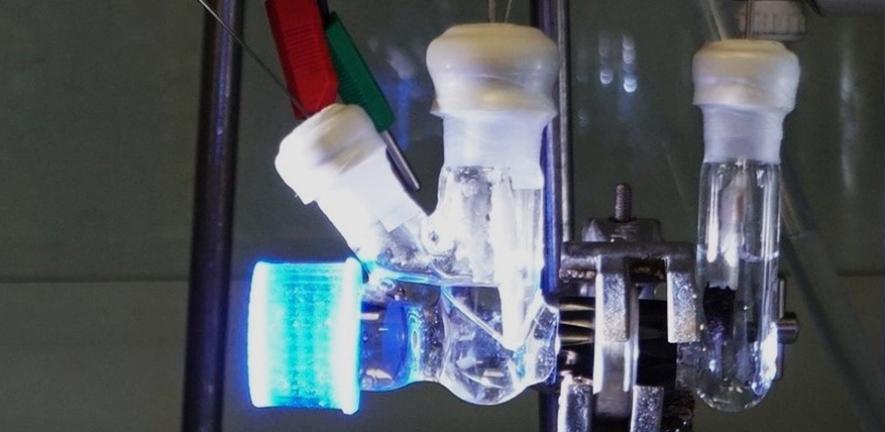
Cambridge scientists have designed a new reactor that is able to convert CO2, water, and plastics into syngas. The system utilizes a photoelectrochemical device powered by an encapsulated triple cation perovskite-based photocathode and an alloy anode
Researchers from the University of Cambridge have created a special reactor powered exclusively by photovoltaic energy that is able to convert both CO2 and water into sustainable synthesis gases, which in turn can be used for industrial applications.
The system utilizes a photoelectrochemical (PEC) device powered by an encapsulated triple cation perovskite-based photocathode and an alloy anode. The PEC system initially captures CO2 from a concentrated CO2 stream, simulated post-combustion flue gas, and atmospheric air. It then converts this CO2 into syngas, a mixture of carbon monoxide (CO), and hydrogen (H2).
“The process operates by combining CO2-to-fuel reduction with selective oxidation of waste plastic-derived ethylene glycol (EG) to glycolic acid (GA), which has applications in pharmaceutical, food, and textile industries,” the scientists explained, noting that the alloy anode is used to catalyze EG oxidation. “Captured CO2 reduction is enabled by an immobilized molecular Co-phthalocyanine catalyst at the photocathode.”
The research team explained that the process works in combination with the selective oxidation of pre-treated polyethylene terephthalate (PET) plastic waste plastics and also converts them into fuel chemicals. It claimed this is a crucial element of the system as the plastic donates electrons to the CO2. “The plastic breaks down to glycolic acid, which is widely used in the cosmetics industry, and the CO2 is converted into syngas, which is a simple fuel,” it stated.
The group also said the system is able to operate properly with a single visible-light absorber, without the need for an externally applied voltage. The photovoltaic device has an open-circuit voltage of 1.1 V and has the ability to absorb over a solar spectrum of 360 nm to 750 nm. “Replacing thermodynamically challenging water oxidation with EG oxidation is essential for the system to operate with a single light absorber without external voltage, which simultaneously enables waste PET upcycling,” it emphasized.
The scientists are currently developing a bench-top demonstrator device and said they are considering using solar cells with higher open-circuit voltage. They also hope to tune the counter oxidation and drive the oxidation of other biomass, textile, or chemical waste products.
The system is introduced in the study “Integrated capture and solar-driven utilization of CO2 from flue gas and air,” published in Joule. “With sufficient improvement, this proof-of-concept solar-driven CO2 capture and utilization system could be promising for future decentralized off-the-grid scalable solar fuels and chemical synthesis technologies,” the researchers concluded.